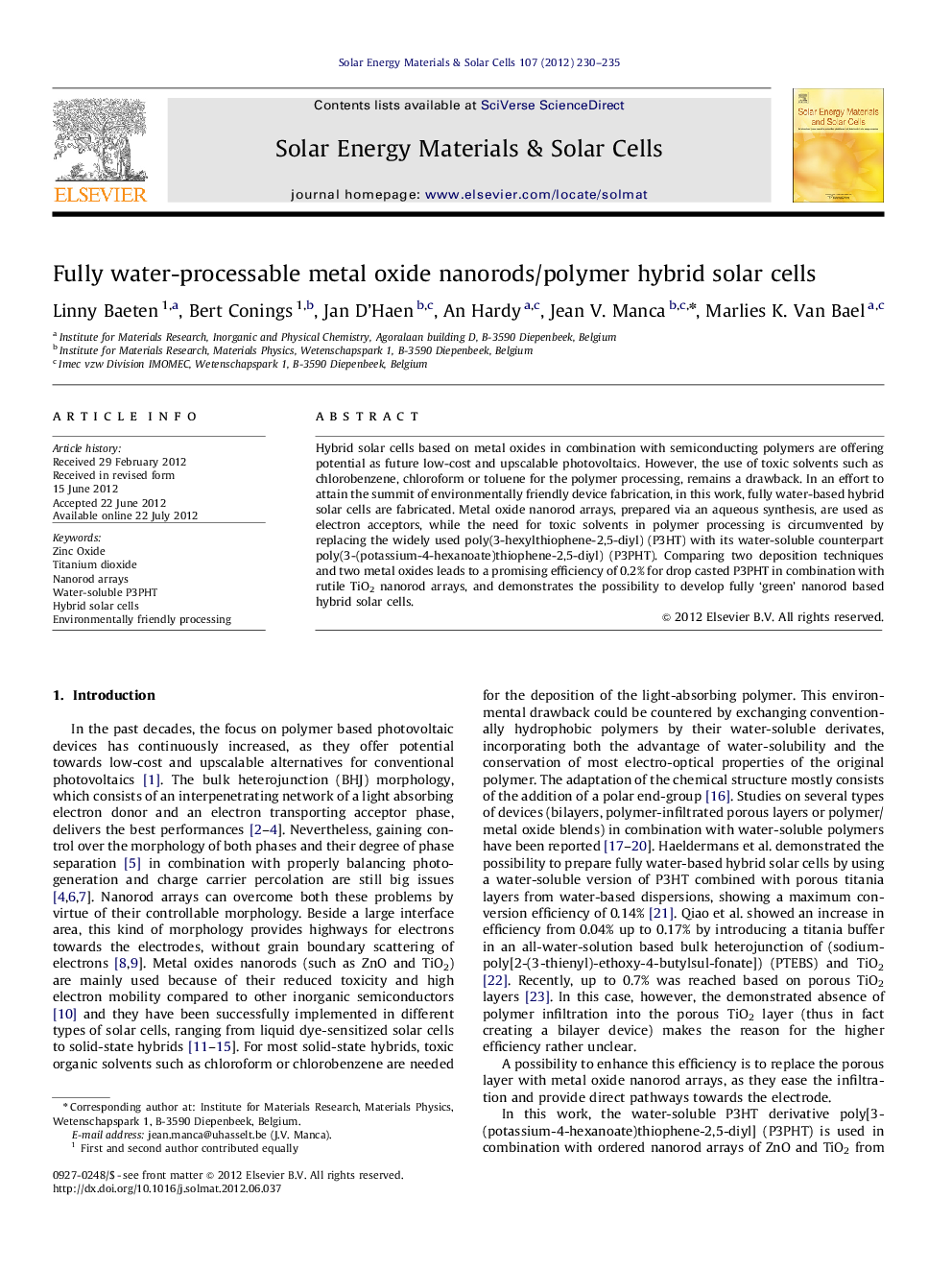| Article ID | Journal | Published Year | Pages | File Type |
|---|---|---|---|---|
| 78913 | Solar Energy Materials and Solar Cells | 2012 | 6 Pages |
Hybrid solar cells based on metal oxides in combination with semiconducting polymers are offering potential as future low-cost and upscalable photovoltaics. However, the use of toxic solvents such as chlorobenzene, chloroform or toluene for the polymer processing, remains a drawback. In an effort to attain the summit of environmentally friendly device fabrication, in this work, fully water-based hybrid solar cells are fabricated. Metal oxide nanorod arrays, prepared via an aqueous synthesis, are used as electron acceptors, while the need for toxic solvents in polymer processing is circumvented by replacing the widely used poly(3-hexylthiophene-2,5-diyl) (P3HT) with its water-soluble counterpart poly(3-(potassium-4-hexanoate)thiophene-2,5-diyl) (P3PHT). Comparing two deposition techniques and two metal oxides leads to a promising efficiency of 0.2% for drop casted P3PHT in combination with rutile TiO2 nanorod arrays, and demonstrates the possibility to develop fully ‘green’ nanorod based hybrid solar cells.
► Preparation of fully environmentally friendly hybrid solar cells. ► First-time report of metal oxide nanorod arrays and water-soluble P3HT combination. ► Polymer deposition technique has significant impact on device performance. ► Polymer/metal oxide (ZnO or TiO2) interfacial compatibility determines efficiency.
